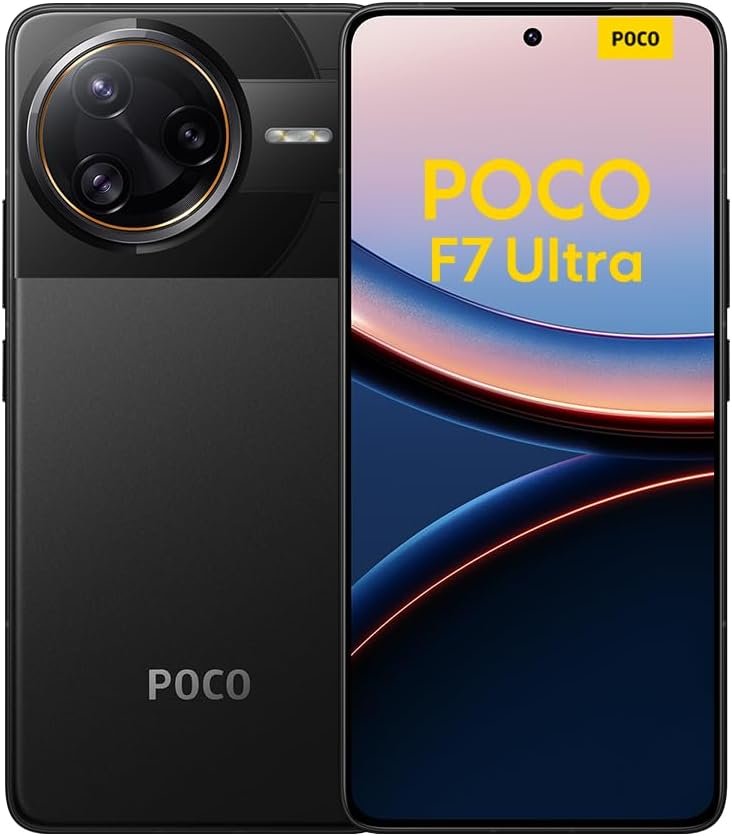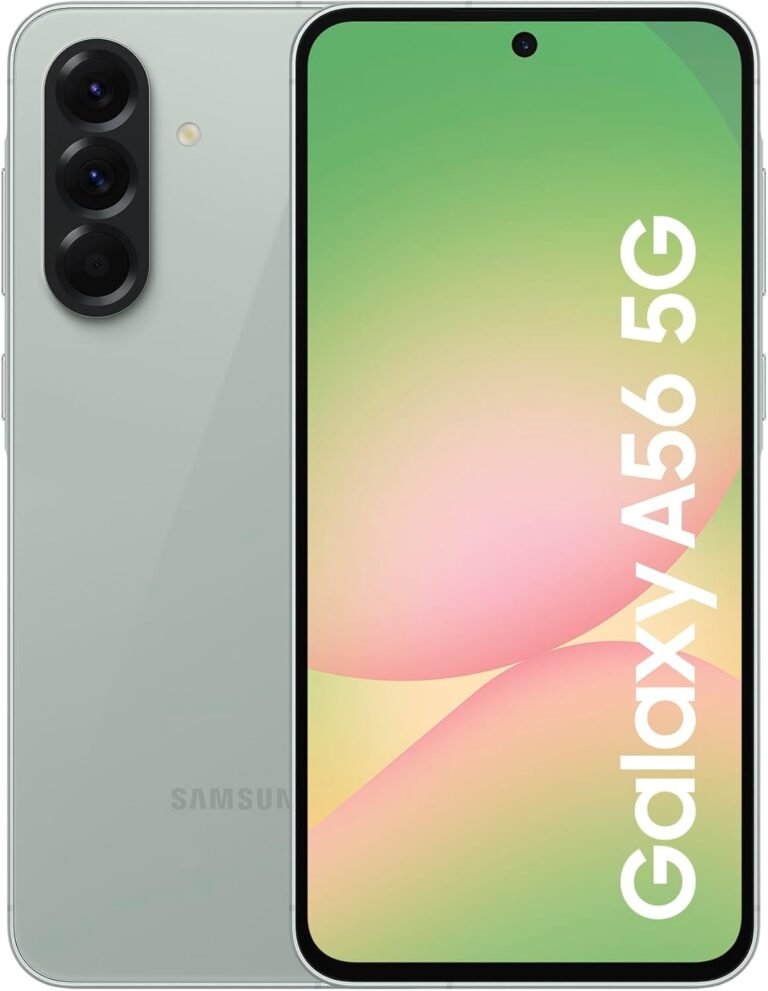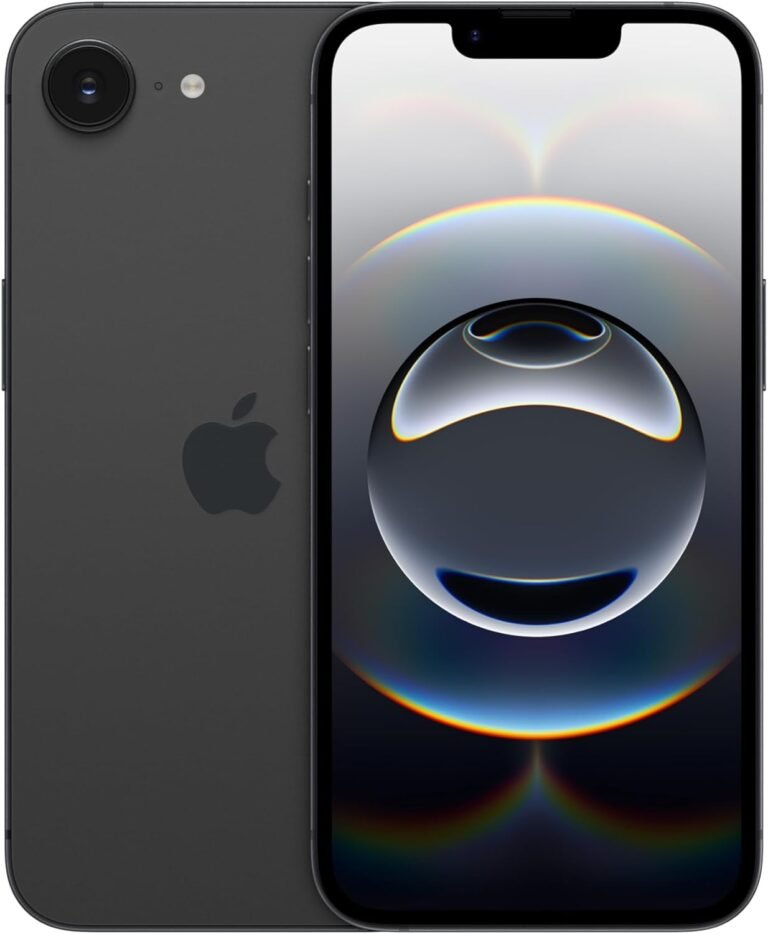The Xiaomi Poco sub-brand has consistently carved out a niche for itself by delivering devices that punch well above their weight class, offering near-flagship specifications at a price point that is significantly more accessible. With the launch of the Xiaomi Poco F7 Ultra, the company is not just continuing this trend but is aggressively pushing the boundaries of what consumers can expect from a performance-oriented smartphone. This device is not merely an iterative update; it represents a significant leap forward in processing power, display technology, and charging capabilities, all while maintaining the value proposition that the Poco name is known for. This extensive review will delve into every facet of the Xiaomi Poco F7 Ultra, exploring its design, the nuances of its display, the raw power of its new chipset, the intricacies of its camera system, the endurance of its battery, and the user experience of its software. We will examine the good and the bad, providing a complete and unfiltered look at this highly anticipated device, relying solely on confirmed specifications and real-world performance data to give you the most accurate picture possible.

Design and Build Quality: A Refined and Robust Approach
The first impression of any smartphone is its physical form, and the Xiaomi Poco F7 Ultra makes a strong statement with its design and build quality. The device moves away from some of the more ostentatious designs of its predecessors and embraces a more refined and premium aesthetic. It’s a tangible shift that you can feel the moment you hold the phone in your hand.
The frame of the Xiaomi Poco F7 Ultra is crafted from a single block of aluminum, which provides a sturdy and rigid foundation for the device. The flat sides of the frame are a nod to modern design trends, but they are subtly beveled at the edges. This small detail makes a significant difference in ergonomics, allowing the phone to sit comfortably in the palm without the sharp edges that can sometimes plague flat-sided designs. The aluminum has a satin finish, which not only looks elegant but also serves a practical purpose: it’s highly resistant to fingerprints. This means the phone will maintain its clean look even after extended use, a small but welcome quality-of-life feature.
The back of the phone is where you’ll find one of the most striking design elements: the choice of materials and colors. The Xiaomi Poco F7 Ultra is available in two colorways: a classic Black and a vibrant Yellow. The Yellow variant, in particular, is a signature Poco color and it looks stunning on this device. The back panel is made of glass, but it has a matte texture that feels wonderful to the touch. This matte finish is also excellent at repelling smudges and fingerprints, which is a huge plus. The way the light plays off the matte surface is subtle and sophisticated. At certain angles, you can see a gentle sheen, and in direct light, some users have even reported seeing tiny, sparkling particles embedded within the finish. It’s a unique look that helps the phone stand out from the sea of glossy glass backs on the market.
The camera housing on the back has also been redesigned. It’s a large, circular module that houses the three camera lenses. A polished steel ring encircles the camera island, adding a touch of flair and visual contrast to the matte back. There’s also a subtle yellow accent around the housing, another nod to the Poco branding. While the camera module is large, it doesn’t protrude excessively, and the phone sits relatively stable on a flat surface.
One of the most significant upgrades to the build quality of the Xiaomi Poco F7 Ultra is its IP68 rating for dust and water resistance. This is a feature that is typically reserved for much more expensive flagship phones, and its inclusion here is a massive win for consumers. The IP68 rating means the phone is completely dust-tight and can be submerged in up to 2.5 meters of water for up to 30 minutes. This provides incredible peace of mind for daily use. You won’t have to worry about getting caught in the rain, accidental spills, or even dropping your phone in the pool. It’s a practical and valuable feature that elevates the Xiaomi Poco F7 Ultra to a new level of durability.
The front of the phone is dominated by the large 6.67-inch display, which we will discuss in more detail later. The bezels surrounding the display are impressively thin, contributing to a high screen-to-body ratio of around 89.3%. This creates an immersive viewing experience, whether you’re watching videos, playing games, or just scrolling through your social media feed. The display is protected by Poco Shield Glass, a proprietary glass technology that is said to be highly resistant to scratches and drops. While it may not have the brand recognition of Corning’s Gorilla Glass, it provides an added layer of protection for the most vulnerable part of the phone.
In terms of dimensions, the Xiaomi Poco F7 Ultra measures 160.3 x 75 x 8.4 mm and weighs 212 grams. It’s not a small phone by any means, but the weight is well-distributed, and it feels solid and balanced in the hand. The combination of the aluminum frame, glass back, and thoughtful ergonomics makes for a device that feels much more premium than its price tag would suggest.
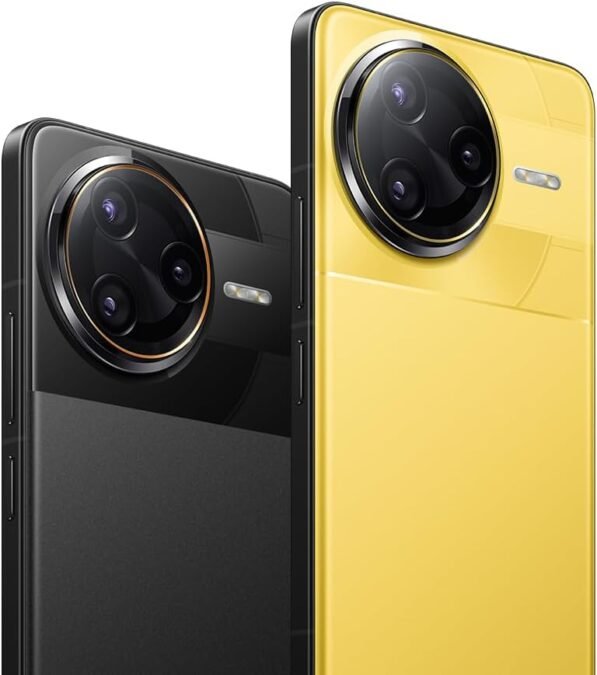
Display: A Visual Masterpiece
The display is arguably one of the most important components of a smartphone, as it’s the primary way we interact with our devices. The Xiaomi Poco F7 Ultra is equipped with a truly exceptional display that is packed with high-end features. It’s a 6.67-inch WQHD+ Flow AMOLED panel with a resolution of 3200 x 1440 pixels. This results in a pixel density of 526 PPI, which is incredibly sharp. Text is crisp and clear, images are detailed, and videos look stunning. The WQHD+ resolution is a significant step up from the FHD+ panels found on most phones in this price range, and it makes a noticeable difference in image quality.
The display also boasts a 120Hz refresh rate, which means the screen refreshes 120 times per second. This results in incredibly smooth and fluid animations, whether you’re scrolling through web pages, navigating the user interface, or playing games. Once you experience a 120Hz display, it’s very difficult to go back to a standard 60Hz panel. The difference is immediately noticeable and dramatically improves the overall user experience. The touch sampling rate is also very high, at up to 480Hz in normal use and an instantaneous 2560Hz in Game Turbo mode. This means the display is incredibly responsive to touch input, which is a huge advantage for fast-paced gaming.
One of the most impressive aspects of the display is its brightness. The Xiaomi Poco F7 Ultra has a peak brightness of 3200 nits. This is an incredibly high number, and it means the display is perfectly usable even in bright, direct sunlight. You’ll have no trouble seeing the screen outdoors, which is a common problem with many other smartphones. The display also supports HDR10+ and Dolby Vision, which means you can enjoy HDR content from streaming services like Netflix and YouTube with enhanced contrast and a wider range of colors.
Speaking of colors, the display on the Xiaomi Poco F7 Ultra is capable of displaying 68 billion colors. This is thanks to its 12-bit color depth, which is a significant improvement over the 10-bit panels found on many other phones. The result is incredibly rich and vibrant colors with smooth gradients. The display also covers the DCI-P3 wide color gamut, which means it can reproduce a wider range of colors than a standard sRGB display. Poco has also included a number of color customization options in the settings, so you can tune the display to your personal preferences. The “Original color Pro” mode is set by default and is very well-calibrated for accurate colors.
Poco has also paid close attention to eye care with the F7 Ultra’s display. The screen uses 3840Hz high-frequency PWM dimming, which is much higher than the PWM dimming frequency of most other OLED displays. This can help to reduce eye strain and fatigue, especially when using the phone in low-light conditions. The display also has a “Cycle mode” that adjusts the color temperature of the screen based on the time of day, and it has received TÜV Rheinland’s Circadian Friendly certification. These features demonstrate a commitment to user well-being that is not always seen in this market segment.
In summary, the display on the Xiaomi Poco F7 Ultra is nothing short of spectacular. It’s sharp, smooth, bright, and colorful, with a host of high-end features that are typically reserved for much more expensive phones. It’s a true flagship-grade display that will please even the most discerning users.
Performance: The Snapdragon 8 Elite Unleashed
The Xiaomi Poco F7 Ultra is a performance powerhouse, and that is largely thanks to the inclusion of the brand-new Snapdragon 8 Elite processor. This is Qualcomm’s latest and greatest chipset, and it’s built on an advanced 3nm manufacturing process. The Snapdragon 8 Elite features an octa-core Oryon CPU, which is a custom CPU design from Qualcomm. It’s a significant departure from the ARM Cortex cores that have been used in previous Snapdragon chips, and it delivers a substantial improvement in performance and efficiency.
The CPU is configured with two high-performance “Phoenix L” cores clocked at up to 4.32GHz and six efficiency “Phoenix M” cores clocked at up to 3.53GHz. This combination of powerful and efficient cores allows the phone to handle any task you throw at it with ease. From everyday tasks like browsing the web and checking social media to more demanding tasks like video editing and 3D gaming, the Xiaomi Poco F7 Ultra never breaks a sweat. The AnTuTu benchmark score for the device is a staggering 2,843,461, which is one of the highest scores we’ve ever seen on a smartphone.
The GPU in the Snapdragon 8 Elite is the Adreno 830, and it’s a beast. It delivers a massive improvement in graphics performance over the previous generation, making the Xiaomi Poco F7 Ultra an absolute dream for mobile gamers. You can play even the most demanding games like Genshin Impact and Honkai: Star Rail at the highest graphics settings with a smooth and stable frame rate. The phone also features LiquidCool Technology 4.0, which is a sophisticated cooling system with a 5,400mm square dual-channel IceLoop system. This helps to keep the phone cool during long gaming sessions, so you don’t have to worry about thermal throttling.
But the performance story doesn’t end there. The Xiaomi Poco F7 Ultra also includes a dedicated graphics boost chipset called the VisionBoost D7. This is a custom chip from Poco that is designed to enhance the gaming and video experience. It enables features like 120FPS frame interpolation, which can make games look even smoother. It also supports 2K Super Resolution, which uses AI to upscale the resolution of games, making them look sharper and more detailed. The VisionBoost D7 also enables Game HDR, which dynamically adjusts the brightness and contrast of the screen in games for a more vibrant and lifelike image. These features are part of Poco’s WildBoost Optimization 4.0, which is a suite of software and hardware enhancements designed to maximize gaming performance.
The Xiaomi Poco F7 Ultra is also equipped with fast LPDDR5X RAM and UFS 4.1 storage. It’s available in two configurations: 12GB of RAM with 256GB of storage, and 16GB of RAM with 512GB of storage. The LPDDR5X RAM is incredibly fast, and the UFS 4.1 storage is the fastest available on a smartphone. This means that apps open instantly, files transfer quickly, and the overall user experience is incredibly snappy.
In terms of real-world performance, the Xiaomi Poco F7 Ultra is simply a joy to use. The combination of the powerful Snapdragon 8 Elite processor, the fast RAM and storage, and the well-optimized software results in a phone that is incredibly fast and responsive. Whether you’re a power user who pushes your phone to the limit or a casual user who just wants a smooth and reliable experience, the Xiaomi Poco F7 Ultra will not disappoint.
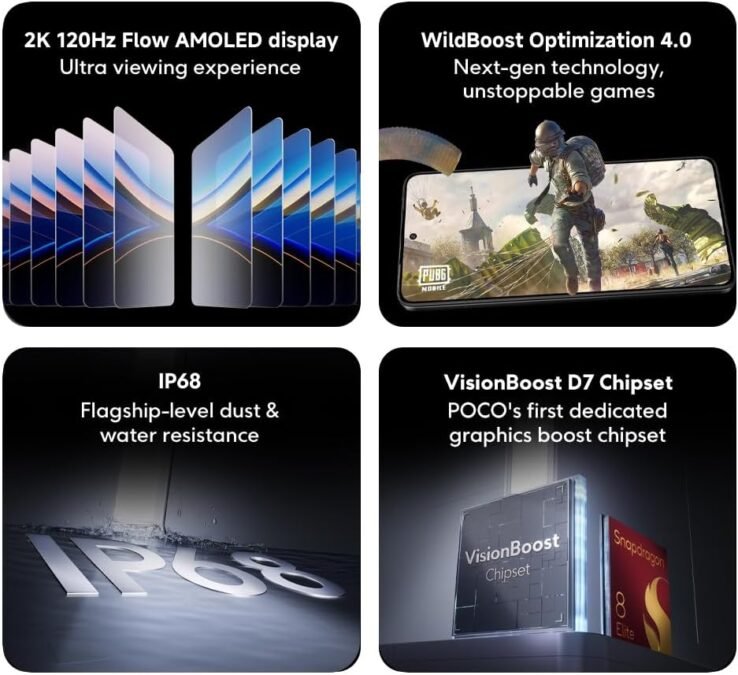
Camera: A Versatile and Capable Triple-Lens System
The camera system on the Xiaomi Poco F7 Ultra is another area where the phone has seen a significant upgrade. Poco has equipped the device with a versatile and capable triple-lens camera system that is a far cry from the often-mediocre cameras found on previous Poco phones.
The main camera is a 50MP sensor with a wide f/1.6 aperture. It’s a Light Fusion 800 image sensor, which is a 1/1.55-inch sensor. This is a respectable sensor size, and it’s paired with Optical Image Stabilization (OIS), which helps to reduce blur from camera shake. In good lighting conditions, the main camera captures excellent photos with plenty of detail, great dynamic range, and pleasing colors. The colors are vibrant but not overly saturated, and the white balance is generally accurate. The camera is also capable of capturing 2x zoom shots by cropping from the main sensor, and these images are also quite good.
The telephoto camera is a real highlight of the camera system. It’s a 50MP sensor with an f/2.0 aperture and 2.5x optical zoom. This is a proper telephoto lens, not a digital zoom, and it allows you to get closer to your subjects without sacrificing image quality. The telephoto camera also has OIS, which is essential for getting sharp shots at longer focal lengths. The images from the telephoto camera are detailed and have excellent color reproduction. One of the most interesting features of the telephoto camera is its close-focusing capability. It can focus on subjects as close as 10cm, which allows you to take some stunning macro-style shots. This is a really fun and versatile feature that you won’t find on many other phones.
The ultrawide camera is a 32MP sensor with an f/2.2 aperture and a 120-degree field of view. This is a significant improvement over the 8MP ultrawide cameras that are often found on phones in this price range. The 32MP ultrawide camera on the Xiaomi Poco F7 Ultra captures detailed and sharp images with good color and dynamic range. The 120-degree field of view is great for capturing expansive landscapes or large group shots. The only real downside of the ultrawide camera is that it doesn’t have autofocus, which means you can’t use it for macro photography.
The front-facing camera is a 32MP sensor that captures sharp and detailed selfies. It has a number of software features, including a portrait mode that does a good job of separating the subject from the background.
In terms of video, the Xiaomi Poco F7 Ultra can record in up to 8K resolution at 24fps. It can also record in 4K at 24/30/60fps. The video quality is excellent, with plenty of detail and good stabilization. The phone also has a number of pro-level video features, including a Director mode that gives you manual control over exposure, focus, and other settings.
While the camera system on the Xiaomi Poco F7 Ultra may not be quite as good as the cameras on the most expensive flagship phones, it is a massive improvement for the Poco brand. It’s a versatile and capable camera system that will please the vast majority of users. The inclusion of a high-quality telephoto lens is a particularly welcome addition, and it makes the camera system much more flexible.
Battery Life and Charging: All-Day Endurance and Blazing-Fast Speeds
The Xiaomi Poco F7 Ultra is equipped with a large 5300mAh battery, which is a generous capacity for a phone of this size. The combination of the large battery and the power-efficient Snapdragon 8 Elite processor results in excellent battery life. You can easily get through a full day of heavy use on a single charge, and with more moderate use, you might even be able to stretch it to two days. In our testing, the phone was able to last for over 13 hours of continuous use, which is a very impressive result.
When it does come time to charge, the Xiaomi Poco F7 Ultra supports an incredible 120W wired HyperCharge. This is one of the fastest charging speeds available on any smartphone, and it’s a game-changer. You can charge the phone from 0 to 100% in just 34 minutes. A quick 10-minute charge will give you enough power to last for several hours. The phone also supports 50W wireless charging, which is also very fast. It’s worth noting that the 120W charger is included in the box, which is not always the case these days.
However, there have been some user reports of issues with the 120W charging. Some users have reported that their phones are only charging at 14W, even when using the official 120W charger. This appears to be a software issue that is affecting some devices, and it’s something that Poco will hopefully address with a future software update. It’s a disappointing issue to see on an otherwise excellent device, but it’s important to be aware of it.
Overall, the battery life and charging on the Xiaomi Poco F7 Ultra are excellent. The phone has all-day endurance, and the 120W charging is incredibly fast. The potential charging issue is a concern, but it’s likely a software bug that will be fixed in the future.

Software: HyperOS 2.0 with a Few Caveats
The Xiaomi Poco F7 Ultra runs on HyperOS 2.0, which is based on Android 15. HyperOS is Xiaomi’s new operating system, and it’s a significant departure from the old MIUI. It has a cleaner and more modern user interface, with a focus on smooth animations and a consistent design language. The OS is also packed with features, including a number of AI-powered features like an AI-powered gallery editor and AI-powered writing assistance.
The software is generally very smooth and responsive, and it takes full advantage of the phone’s powerful hardware. However, some users have reported experiencing bugs and software limitations. For example, some users have reported that some of the AI features have disappeared from their phones, and others have reported that the Bluetooth interface can sometimes crash. These are likely early software bugs that will be ironed out with future updates, but they are something to be aware of.
Another potential downside of the software is the presence of some pre-installed apps, or bloatware. While you can uninstall most of these apps, it’s still a minor annoyance.
Despite these minor issues, HyperOS 2.0 is a good operating system. It’s fast, feature-rich, and visually appealing. And with the promise of regular software updates from Poco, the user experience is likely to only get better over time.
The Good and The Bad
The Good:
- Incredible Performance: The Snapdragon 8 Elite processor is an absolute beast, and it makes the Xiaomi Poco F7 Ultra one of the fastest phones on the market.
- Stunning Display: The 6.67-inch WQHD+ AMOLED display is sharp, smooth, bright, and colorful. It’s a true flagship-grade display.
- Excellent Battery Life: The 5300mAh battery provides all-day endurance, even with heavy use.
- Blazing-Fast Charging: The 120W wired charging is incredibly fast, and the 50W wireless charging is also a great feature.
- Premium Design and Build Quality: The aluminum frame, matte glass back, and IP68 rating give the phone a premium look and feel.
- Versatile Camera System: The triple-lens camera system is a significant improvement for the Poco brand, and the telephoto lens is a particularly welcome addition.
- Great Value: The Xiaomi Poco F7 Ultra offers a ton of flagship-level features at a price that is much more accessible than the competition.
The Bad:
- Potential Charging Issues: Some users have reported issues with the 120W charging, with their phones only charging at 14W. This appears to be a software bug that needs to be addressed.
- Software Bugs: Some users have reported experiencing bugs and software limitations with HyperOS 2.0. These are likely early software issues that will be fixed with updates, but they are something to be aware of.
- No Headphone Jack: Like many modern smartphones, the Xiaomi Poco F7 Ultra does not have a 3.5mm headphone jack.
- No Expandable Storage: The phone does not have a microSD card slot, so you’ll need to choose your storage configuration carefully when you purchase the device.
- Camera Not Quite Top-Tier: While the camera system is a huge improvement for Poco, it’s still not quite on the same level as the cameras on the most expensive flagship phones.
Conclusion
The Xiaomi Poco F7 Ultra is an exceptional smartphone that delivers on its promise of “everything you need, nothing you don’t.” It’s a performance powerhouse with a stunning display, excellent battery life, and blazing-fast charging. The design and build quality are top-notch, and the camera system is a huge improvement for the Poco brand.
While there are a few minor issues, such as the potential charging bug and some early software quirks, these are likely to be addressed with future updates. And when you consider the incredible value that the Xiaomi Poco F7 Ultra offers, these minor issues are easy to overlook.
If you’re looking for a phone with flagship-level performance without the flagship-level price tag, the Xiaomi Poco F7 Ultra is an excellent choice. It’s a phone that punches well above its weight class, and it’s a testament to Poco’s commitment to delivering high-performance devices at an affordable price. The Xiaomi Poco F7 Ultra is, without a doubt, one of the best value smartphones of the year.
Buy Now on Amazon
Choose your region to purchase with fast delivery and secure checkout.

